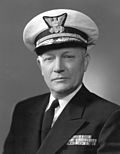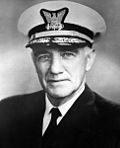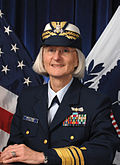| Vice Commandant of the Coast Guard | |
|---|---|
 Seal of the Coast Guard | |
 Flag of the vice commandant | |
| United States Coast Guard | |
| Type | Service vice chief |
| Reports to | Commandant of the Coast Guard |
| Seat | Douglas A. Munro Coast Guard Headquarters Building, Washington, D.C. |
| Appointer | The president with Senate advice and consent |
| Constituting instrument | 14 U.S.C. § 304 |
| Formation | 1929 |
| First holder | Benjamin M. Chiswell |
| Website | www.uscg.mil |
The vice commandant of the Coast Guard serves as the second-in-command of the United States Coast Guard, behind only the commandant of the Coast Guard.
Contents
Since 1929, 31 officers have served as vice commandant, or, as the position was referred to before 1972, assistant commandant. The title of the position was changed effective October 2, 1972, pursuant to Pub. L. 92–451. This position has been historically held by a vice admiral until the Coast Guard Authorization Act of 2015 elevated the statutory rank for the position to admiral.
The current acting vice commandant is Vice Admiral Thomas G. Allan Jr., who has served in an acting capacity since July 3, 2025.

































